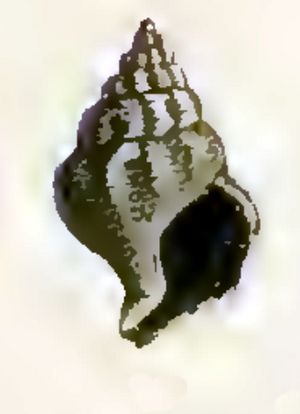Comitas crenularoides facts for kids
Quick facts for kids Comitas crenularoides |
|
|---|---|
 |
|
| Original image of a shell of Comitas crenularoides | |
| Scientific classification | |
| Synonyms | |
|
Drillia crenularoides G.B. Pritchard, 1896 |
Comitas crenularoides is an extinct species of sea snail. This marine gastropod mollusc belonged to the family Pseudomelatomidae, which includes turrids and their relatives. It lived a long, long time ago!
What Did It Look Like?
This sea snail had a medium-sized and long, narrow shell. The shell could grow up to 24 mm (about an inch) long, not counting its very first spirals. Its widest part was about 8 mm across.
The shell had a tall, pointed top called a spire, made up of many spirals, or whorls. This spire was longer than the shell's opening and its special tube. Each spiral had small bumps or ridges, called ribs. There was also a slight dip just below the seam (suture) where the spirals joined.
The opening of the shell, called the aperture, was oval-shaped. It narrowed at the top and gradually stretched out at the bottom into a short, slightly curved tube called the siphonal canal. The outer edge of the opening was thin and a bit wavy. It had a clear, deep curve, or sinus, just below a noticeable band near the top.
Inside the shell, there was a central pillar called the columella, which was simple and slightly bent. The older spirals of the shell had slanted ribs. On the newer spirals, these ribs became more like strong bumps or nodules in the middle. There were usually about nine of these ribs or bumps on each spiral.
The shell also had spiral patterns. There were four or five strong spiral lines on the front two-thirds of each spiral. On the main body spiral, there were about eight or nine. There was also one strong spiral line right next to the back seam, forming a clear band. Finer spiral lines could be seen in the grooves between the stronger ones, especially on the body spiral.
Where Did It Live?
This marine snail lived in the ocean around Australia. Scientists have found its fossils in ancient rocks from the Eocene period (a time long ago, about 34 to 56 million years ago!) at Table Cape in Tasmania.

